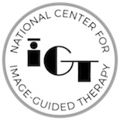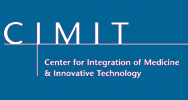Difference between revisions of "Robarts Training Session"
| Line 66: | Line 66: | ||
| style="background:#b4d597; color:#522200"| | | style="background:#b4d597; color:#522200"| | ||
*08:30-08:45''' Welcome''' (Fenster, Peters, Pieper) | *08:30-08:45''' Welcome''' (Fenster, Peters, Pieper) | ||
| − | * | + | *08:45-9:00 Overview of NA-MIC [[media:NA-MIC_2008.ppt|NA-MIC]] |
| − | * | + | *09:00-10:00 '''Engineering methodology''' (Hata) |
** Extreme programming | ** Extreme programming | ||
** What is a software engineering methodology, do I need one? | ** What is a software engineering methodology, do I need one? | ||
| − | ** The components of the NA-MIC kit software engineering tools: CMAKE, CTEST, CPACK, Dashboards | + | ** The components of the NA-MIC kit software engineering tools: ITK, VTK, CMAKE, CTEST, CPACK, Dashboards |
| style="background:#b4d597; color:#522200"| | | style="background:#b4d597; color:#522200"| | ||
| + | ** [http://www.itk.org/ItkSoftwareGuide.pdf ITK] (Jomier) [[media:Na-MIC-Germany-ITK.ppt|(Slides)]] | ||
| + | ** [http://vtk.org VTK] [[media:VTK_-_2008_June_Workshop_Germany.ppt|(Slides)]] | ||
| + | ** [http://kwwidgets.org KWWidgets] [[media:KWWidgets_-_2008_June_Workshop_Germany.ppt|(Slides)]] | ||
| + | ** [[Media:NA-MIC-AHM08-BatchMake.ppt|Batchmake]] [[media:Na-MIC-Germany-BatchMake.ppt|(Slides)]] | ||
| + | |||
| + | |||
* 8:30 - 9:30 '''IGT workflows''' using neurosurgical planning as an example (Pace) | * 8:30 - 9:30 '''IGT workflows''' using neurosurgical planning as an example (Pace) | ||
** Model Making and Diffusion Tensor (Part 2) | ** Model Making and Diffusion Tensor (Part 2) | ||
| Line 82: | Line 88: | ||
| style="background:#ffffdd; color:black"| Morning Session 2 | | style="background:#ffffdd; color:black"| Morning Session 2 | ||
| style="background:#b4d597; color:#522200"| | | style="background:#b4d597; color:#522200"| | ||
| − | * 10:30 - 11:00 ''' | + | * 10:30 - 11:00 '''XNAT''' (Pieper) [[media:Pieper-XNAT-2008-06-16.ppt|(Slides)]] |
*11:00 - 12:30 '''Slicer3''' (Pieper) | *11:00 - 12:30 '''Slicer3''' (Pieper) | ||
** Overview and Features | ** Overview and Features | ||
| Line 110: | Line 116: | ||
| style="background:#ffffdd; color:black"| Afternoon Session 2 | | style="background:#ffffdd; color:black"| Afternoon Session 2 | ||
| style="background:#b4d597; color:#522200"| | | style="background:#b4d597; color:#522200"| | ||
| − | * 4:30 - 4:45 '''Slicer 3 IGT capabilities''' (Hata) | + | * 4:30 - 4:45 |
| + | ** [[media:SlicerIGTOverview.ppt|'''Slicer 3 IGT capabilities''']] (15 min. Hata) | ||
** [[IGT:ToolKit|The IGT Toolkit]] | ** [[IGT:ToolKit|The IGT Toolkit]] | ||
** Concept, Architecture, Design | ** Concept, Architecture, Design | ||
Revision as of 10:02, 15 October 2008
Home < Robarts Training SessionContents
Course Description
The NA-MIC Kit is a free open-source software platform for biomedical researchers and algorithm developers working in the fields of medical image analysis, visualization and image-guided therapy. This NA-MIC Kit Software Workshop is a two-day interactive course allowing scientists and trainees to learn about the NA-MIC Kit, including 3D Slicer, The Visualization Toolkit (VTK), The Insight Toolkit (ITK) and CMake. Participants will receive hands-on training in the end-user applications and software libraries, making this course applicable to both clinical users interested in using the software for their image analysis and visualization tasks, and software developers considering using the NA-MIC Kit as their software platform.
Course Faculty
- Noby Hata, Ph.D., Surgical Planning Laboratory, Brigham and Women's Hospital, Harvard Medical School
- Kathryn Hayes, M.S.E., Surgical Planning Laboratory, Brigham and Women's Hospital, Harvard Medical School
- Danielle Pace, B.CmpH, Robarts Research Institute and The University of Western Ontario
- Steve Pieper, Ph.D., Isomics Inc.
- Junichi Tokuda, Ph.D., Surgical Planning Laboratory, Brigham and Women's Hospital, Harvard Medical School
Local Hosts
- Aaron Fenster, Ph.D., Director, Ontario Institute for Cancer Research Imaging Pipeline Platform
- Terry Peters, Ph.D., Robarts Research Institute and The University of Western Ontario
Logistics
- Dates: Wednesday, October 15 - Thursday, October 16, 2008
- Venue: Room 100, London Hall, 1421 Western Road, The University of Western Ontario, London, Ontario, Canada
- The University of Western Ontario on Google Maps
- Driving directions to The University of Western Ontario
- Map of campus
- Parking map
- Parking is available in either the "Huron Flats Lot" or "Althouse Lot" and is $4.00 (coin) per entry. Please note that the front desk of London Hall does not have change available for parking.
- There is a pathway leading from the Huron Flats parking lot to London Hall. Althouse Lot is located behind Perth Hall on the opposite side of Western Road to London Hall.
Registration
Registration for this event is now closed.
- In order to maintain a close participant-faculty ratio, space is extremely limited.
- Please register with Sandra Noble-Topham via email (snt [at] imaging.robarts.ca) by Friday, September 26, 2008. Please include your:
- Full Name
- Email address
- Telephone number
- Lab supervisor
- University Name
- Current status (Masters Candidate, PhD candidate, undergraduate, staff member or principal investigator)
- Any dietary restrictions
Course Requirements
- To participate in this interactive workshop, attendees are required to bring their own laptop with the tutorial software and sample datasets pre-installed.
Sponsors
Agenda
Arrival: Tuesday, October 14
| Time | Wednesday, October 15 | Thursday, October 16 |
| Breakfast | Breakfast (8:00-8:30) | Breakfast (8:00-8:30) |
| Morning Session 1 |
|
|
| Coffee Break | Coffee Break (10:00-10:30) | Coffee Break (10:00-10:30) |
| Morning Session 2 |
|
|
| Lunch (12:30-1:30) | Lunch (12:00-1:00) | |
| Afternoon Session 1 |
|
|
| Coffee Break | Coffee Break (4:00-4:30) | Coffee Break (2:30-3:00) |
| Afternoon Session 2 |
|
|
Pre-workshop Preparation List
The workshop is a series of hands-on sessions. All participants should complete the Developer Prerequisites in advance of the workshop. This includes both building Slicer from source, building the additional software and downloading the datasets.
- Note: Building Slicer can take up to 2 hours.
- We recommended the following configuration: Windows XP, Linux (x86 or x86_64), Mac OS (ppc or Intel), 2 GB of RAM and a dedicated graphic accelerator with 128 MB of on board graphic memory.
- Please contact the Slicer Users mailing list for support and questions related to the software.





